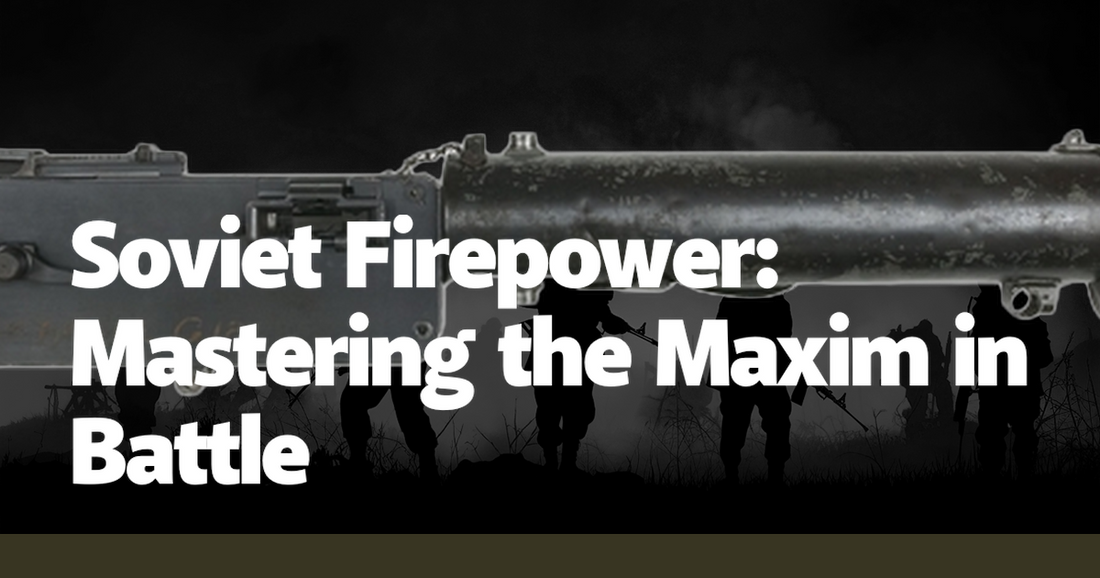The legacy of Soviet firepower is indelibly tied to the Maxim machine gun, a weapon that became synonymous with relentless fire and battlefield supremacy. Developed in the late 19th century by Hiram Maxim, this machine gun was revolutionary, transforming warfare with its ability to unleash sustained automatic fire. The Soviets, recognizing its potential, adapted and perfected the Maxim for their own military needs, making it a cornerstone of their infantry tactics. The Soviet version, the PM M1910, featured a distinctive wheeled mount and a water-cooled barrel, ensuring it could maintain high rates of fire without overheating. This adaptability made the Maxim an indispensable tool in the Soviet arsenal, from the Russian Civil War to the brutal fronts of World War II.
During the Russian Civil War, the Maxim's role was pivotal. Both the Red and White armies utilized it, but the Red Army's strategic deployment of the Maxim often turned the tide of battle. Soviet commanders placed Maxim guns at strategic points, creating kill zones that decimated advancing enemy troops. One notable example was the defense of Tsaritsyn, where the Red Army, under the command of Joseph Stalin and Kliment Voroshilov, used Maxim guns to repel White Army assaults, inflicting heavy casualties and securing a critical victory. The Maxim's ability to sustain firepower over long periods was a game-changer, allowing relatively small units to hold off larger forces.
World War II saw the Maxim reach its zenith in Soviet military strategy. On the Eastern Front, where the scale of combat was unprecedented, the Maxim's reliability and firepower were crucial. The Battle of Stalingrad, one of the war's most brutal confrontations, highlighted the Maxim's effectiveness. Soviet troops, entrenched in the city's ruins, used Maxim guns to create deadly crossfires, turning streets and buildings into death traps for the advancing Wehrmacht. The Maxim's presence on the battlefield not only inflicted heavy losses on the enemy but also boosted the morale of Soviet soldiers, who knew they had a formidable weapon at their disposal.
The Maxim's design, with its water-cooled barrel, was particularly suited to the harsh conditions of the Eastern Front. The bitter cold could seize up less robust weapons, but the Maxim's simple, rugged design ensured it continued to function. Soviet soldiers often improvised, using any available liquid to cool the barrel, from water to antifreeze, ensuring the gun could keep firing. This adaptability was crucial during prolonged engagements, where the Maxim's ability to maintain a high rate of fire without overheating gave Soviet forces a significant advantage.
Training and tactics also played a significant role in the Maxim's success. Soviet infantry units were rigorously trained in the deployment and maintenance of the Maxim, ensuring they could quickly set up and operate the gun under fire. This training paid off in countless engagements, where well-coordinated Maxim teams could rapidly establish defensive positions or provide suppressive fire for advancing troops. The psychological impact of the Maxim's relentless fire was profound, often breaking the will of enemy soldiers who faced its deadly barrage.
Anecdotes from veterans highlight the Maxim's impact on the battlefield. One Soviet machine gunner recalled the harrowing experience of defending a position against a German assault. As waves of enemy troops advanced, the Maxim's continuous fire mowed them down, creating a grim tableau of war's brutality. Despite the horror, the gunner noted a sense of grim satisfaction in knowing that the Maxim had held the line, saving his comrades from being overrun. Such stories underscore the Maxim's role not just as a weapon, but as a symbol of Soviet resilience and determination.
The Maxim's influence extended beyond the battlefield, shaping Soviet military doctrine and industrial production. The Soviet Union's ability to mass-produce the Maxim, even under the direst conditions, demonstrated their industrial prowess and commitment to maintaining firepower superiority. Factories, often relocated deep within Soviet territory to avoid German bombardments, churned out Maxim guns in vast numbers, ensuring a steady supply to the front lines. This industrial effort was a testament to the Soviet war machine's capability and the Maxim's central role within it.
In the post-war period, the Maxim's legacy continued to influence Soviet and global military practices. While newer machine guns eventually replaced it, the lessons learned from its deployment and the tactical innovations it inspired remained relevant. The Maxim's story is a powerful reminder of how a single weapon, when mastered and integrated into a broader strategy, can alter the course of history. Its enduring legacy in Soviet military history is a testament to the ingenuity, resilience, and tactical acumen of those who wielded it, making the Maxim not just a tool of war, but a legend in its own right.

